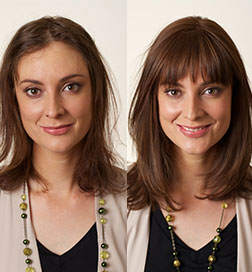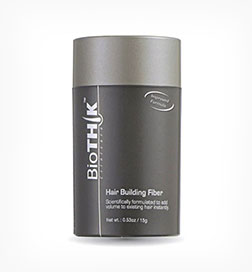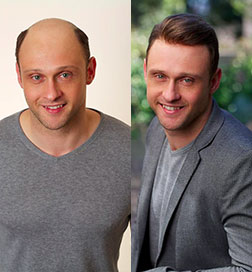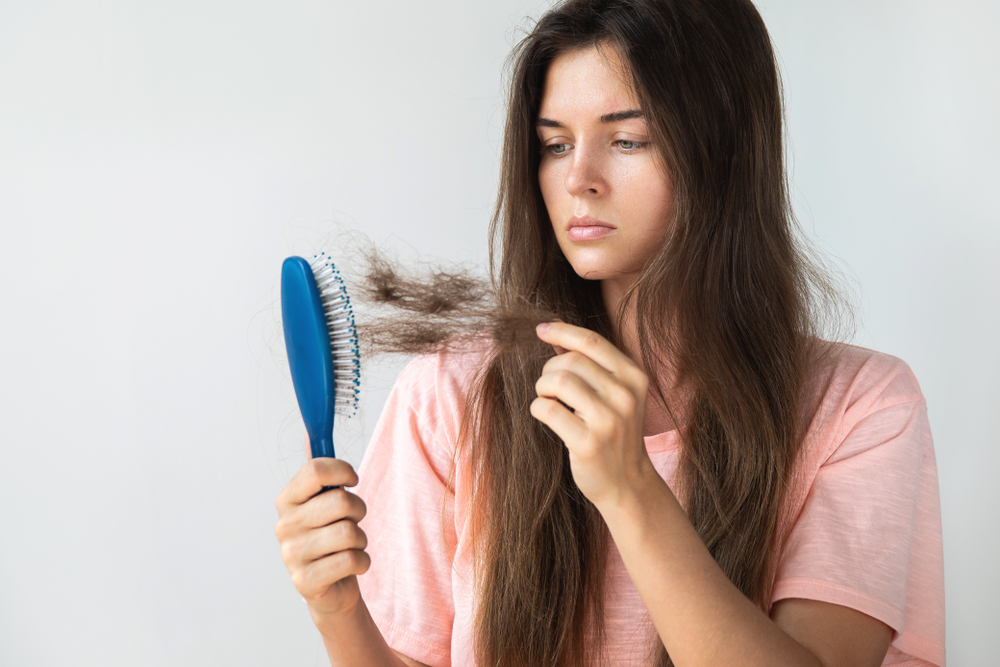Everything to Know about Hair Loss
Hair loss is a common concern that can impact people’s lives. In this guide, we will delve into the causes of hair loss, defining the condition, highlighting some symptoms, and discussing hair loss and its profound impact on individuals. By understanding what causes hair loss, we aim to provide valuable insights that can help those affected and create awareness about the challenges they face.
Hair Loss Symptoms
Receding Hair Line
A receding hairline refers to the gradual thinning or loss of hair along the edges of the forehead, resulting in a higher hairline. It often begins with the formation of a distinct “M” shape or a widow’s peak. To spot it quickly, look for a noticeable change in the hairline, increased visibility of the forehead, or a more pronounced “V” shape at the temples.

Bald Patches
A bald patch refers to an area on the scalp where hair is noticeably absent or thinner. Look for smooth, hairless patches on the scalp that stand out from the surrounding hair. They generally begin on the crown of your head.
Widening Part
A widening part refers to a visible increase in the width of the parting line in your hair. It is often associated with hair loss or thinning along the scalp. Pay attention to a broader and more noticeable gap between your hair strands when parting your hair. Early detection can prompt timely intervention and management.

What Causes Hair Loss?
There are 5 main hair loss causes we can help you diagnose and treat in our salons.
Androgenic Alopecia (Hereditary Hair Loss)
Commonly known as male or female pattern baldness, Androgenic alopecia is a genetic condition characterised by progressive hair loss. It typically begins with a receding hairline in men or a widening part in women, followed by thinning of hair on the crown.
It is detectable through the gradual decreasing in hair density and noticeable hair shedding – lots of hair in your brush.
Alopecia Areata (Autoimmune Condition)
Alopecia areata is an autoimmune condition characterised by sudden hair loss, often in round or oval patches on the scalp, but it can affect any hair-bearing area of the body.
Look for distinct, smooth, and hairless patches that appear rapidly. These patches may be surrounded by short, broken hairs. Consulting a healthcare professional is crucial for an accurate diagnosis and to explore appropriate treatment options for managing alopecia areata.
Anagen Effluvium (Rapid Hair Loss)
Anagen effluvium is a type of hair loss characterised by the shedding of actively growing hair due to damage to the hair follicles. It is commonly caused by chemotherapy or radiation therapy.
To spot it, watch for sudden and extensive hair loss occurring within weeks of starting cancer treatment. The hair may come out in clumps and can be easily pulled out from the root. Promptly informing healthcare providers about the symptoms is crucial for appropriate management.
Telogen Effluvium (Mental and Physical Shock)
Telogen Effluvium is a temporary hair loss condition caused by factors such as stress, illness, or hormonal changes. It typically occurs when a large number of hair follicles enter the resting phase simultaneously, leading to shedding.
You can spot it by noticing excessive hair fall, more hair on pillows, or increased hair left in brushes or shower drains.

Traction Alopecia
Traction Alopecia is a type of hair loss that is caused by prolonged tension or pulling on the hair. It commonly occurs due to tight hairstyles like braids, ponytails, or extensions.
If you notice thinning or receding hair in the areas of constant tension, this could be a sign of Traction Alopecia.
Options for Hair Loss
There are some options to consider when looking to reverse or treat hair loss.
Cosmetic Hair Systems
Unlike your grandpa’s toupe, today’s hair system technology is like nothing we’ve seen before. These natural looking cosmetic hair systems for men and women look just like your natural hair and go along with your lifestyle, however active you may be.
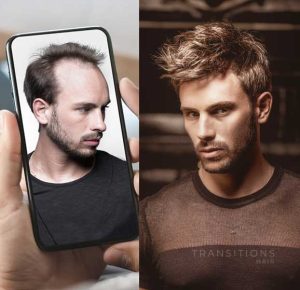
Mens hair systems offer natural looking, undetectable hairlines that can work with your own hair, as much or as little as you have. Rather than a long process of regrowth, you can have a completely new look in just a couple of hours, with zero surgery or recovery time. The options are endless – choose a look that goes with your lifestyle, your look, and your style.

Women’s crown extensions and full head wigs offer just the right amount of coverage, body and style to the hair you’re currently working with. Whether you need to add a bit of body, thicken your hair’s appearance on top, or opt for a full head of hair, human hair wigs and toppettes can offer just the solution to your hair loss that you’ve been looking for.
Laser Hair Therapy
Laser hair therapy, also known as low-level laser therapy (LLLT), helps hair loss recovery by stimulating hair follicles and promoting hair growth.
It involves the use of red light lasers or LED devices to emit specific wavelengths of light onto the scalp. This light energy penetrates the scalp, increases blood circulation, and encourages cellular activity in the hair follicles.

This stimulation can help revitalise weakened hair follicles, promote hair regrowth, and improve the overall thickness and quality of the hair.
Transitions Hair has laser hair therapy for women, and for men, who need help stimulating hair growth.
BioTHIK Hair Building Fibres
BioTHIK assists in the thickening of existing hair. It contains natural keratin fibres that bond to individual hair strands, instantly adding volume and thickness. The fibres adhere to the hair shafts, creating a fuller appearance and camouflaging areas of thinning or sparse hair. BioTHIK provides a temporary solution for individuals looking to enhance the thickness of their existing hair, offering immediate and visible results.

Hair Transplant Surgery
Hair transplant surgery assists in hair loss recovery by addressing areas of thinning or balding. It involves extracting healthy hair follicles from donor areas and transplanting them into the recipient areas. By relocating these follicles, hair transplant surgery can restore a more natural hairline and improve overall hair density.
The transplanted hair continues to grow naturally, providing a long-lasting solution. It is an effective method for women and also for men seeking a permanent solution to their hair loss and can greatly enhance their self-confidence and appearance.
Hair Loss Frequently Asked Questions
Does Lack of Sleep Cause Hair Loss?
Lack of sleep, itself, has not been linked to any cause of hair loss. However, chronic sleep deprivation can lead to stress and hormonal imbalance, which are symptoms in Telogen Effluvium.
Which Vitamin Deficiency Causes Hair Loss?

A common deficiency associated with hair loss is a lack of Vitamin D. It can affect hair follicle function and contribute to hair thinning or shedding.
Transitions Hair have supplements for men, and for healthy hair in women which promote growth and full heads of hair.
Does Dandruff Cause Hair Loss?
By itself, dandruff does not cause hair loss. However, if left untreated, dandruff can cause conditions such as seborrheic dermatitis, which can lead to scalp inflammation, itching and scratching. This can damage hair follicles and lead to hair loss.
Free Hair Loss Consultation at Transitions Hair
Hair loss can hit you on an emotional level, as well as a physical one. The team here at Transitions Hair understand this. We’re sensitive to how hair loss can change your life, and we want to help diagnose and treat any hair loss issue you have.
We can help with laser treatment, transplant surgery, and a range of realistic wigs. Get in touch with our team of experts today for a free consultation to discover your options. Feel The Confidence Every Day.
